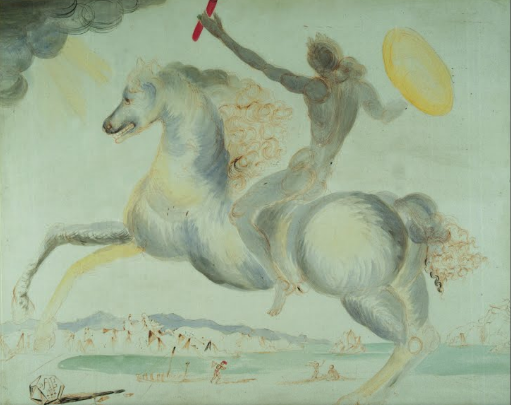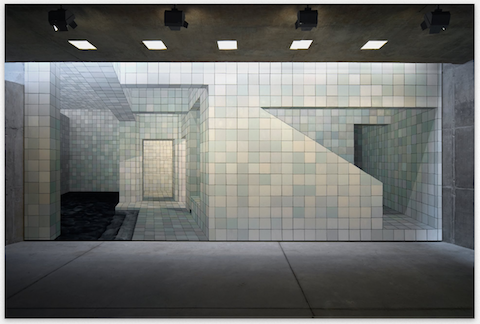In its art preservationist wing, the Cultural Institute, Google houses an enormous digital collection of artwork spanning centuries and continents in what it calls the Art Project. Google’s collection, writes Drue Kataoka at Wired, is part of a “big deal […] it signals a broader, emerging ‘open content’ art movement.” “Besides the Getty,” Kataoka notes, this movement to digitize fine art collections includes efforts by “Los Angeles’ LACMA… as well as D.C.’s National Gallery of Art, the Dallas Museum of Art, Baltimore’s Walters Art Museum, and the Yale University Art Gallery. And Google. Yes, Google.” Google is working hard to defuse this “yes, Google” reaction, posting frequent updates to its collection, already a magnificent phenomenon: “Imagine seeing an image of the Fall of the Rebel Angels by Pieter Breuegel the Elder,” writes Kataoka, “or Vincent van Gogh’s Irises, in high resolution.” Now, you can, thanks to Google’s astonishingly vast digital archive.
In the Art Project, you can stroll on over to Portugal’s Museu do Caramulo, for example, which Google describes as “an unusual museum in a small town” off the beaten path. There, you can see this macabre 1947 Picasso still life or this 1954 Salvador Dali portrait of a Roman horseman in Iberia (above). Then head over to the other side of the world, where the Adachi Museum of Art in Japan contains 165,000 square meters of Japanese garden: “The Dry Landscape Garden, The White Gravel and Pine Garden, the Moss Garden, and The Pond Garden.” It also features gorgeous paintings like Yokoyama Taikan’s 1931 Autumn Leaves and Hishida Shunso’s adorable 1906 Cat and Plum Blossoms. Dozens of smaller collections like these sit comfortably alongside such extensive and well-known collections as New York’s MoMA and Metropolitan Museum of Art and Florence’s Uffizi. See a tiny sampler of the Art Project in the video teaser above.
Google’s collection has greatly expanded since its comparatively modest 2011 roll-out. The company signed partnership agreements with 151 institutions in 2012 and the Art Project has grown since then to include over 57,000 digital representations of famous and not-so-famous works of art. Most recently, it has added work to the online collections of 34 different partner institutions. Google’s announcement on its official blog takes a themed approach, presenting versions of several trompe l’oeil (“fool the eye”) works that have just joined the Art Project. Trompe l’oeil is a gimmick as old as antiquity, and Google gives us several examples, beginning with the stylish, understated Brazilian train station mural right above by Adriana Varejao. Below, see the ceiling of Italy’s National Archaeological Museum of Ferrara, a much more classical (or Baroque) approach to trompe l’oeil that displays some typical elements of the period, including elaborate geometric designs, lots of gold, and well-dressed figures staring down at viewers or floating off into the heavens. See more trompe l’oeil works on Google’s blog, and access their full digital collection here.

Related Content:
The Rijksmuseum Puts 125,000 Dutch Masterpieces Online, and Lets You Remix Its Art
The Getty Puts 4600 Art Images Into the Public Domain (and There’s More to Come)
Free: The Metropolitan Museum of Art and the Guggenheim Offer 474 Free Art Books Online
Josh Jones is a writer and musician based in Durham, NC. Follow him at @jdmagness




Thank You!
Thanku
Is there any way I can download the paintings my wife and I can take our time in looking at all of them? Thanks, Ron
I would also like to download these. Is this possible? Thank you!
In The Google Art Project, there seems to be a mistake. The plural form of the word, Medium, is “Media”, not “Mediums”. Unless that rule has changed since I was an Art student in the late 80s.